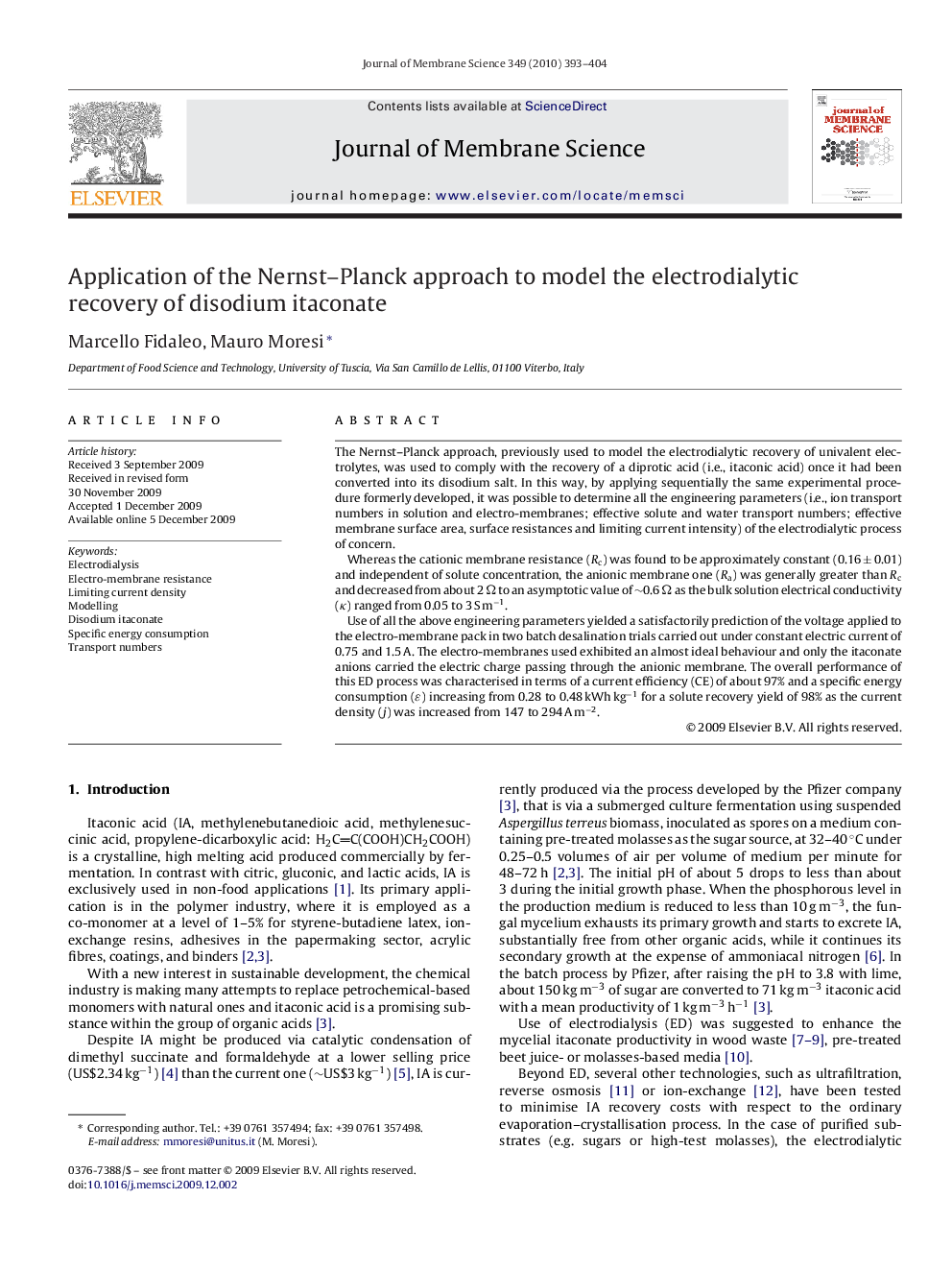| Article ID | Journal | Published Year | Pages | File Type |
|---|---|---|---|---|
| 636619 | Journal of Membrane Science | 2010 | 12 Pages |
The Nernst–Planck approach, previously used to model the electrodialytic recovery of univalent electrolytes, was used to comply with the recovery of a diprotic acid (i.e., itaconic acid) once it had been converted into its disodium salt. In this way, by applying sequentially the same experimental procedure formerly developed, it was possible to determine all the engineering parameters (i.e., ion transport numbers in solution and electro-membranes; effective solute and water transport numbers; effective membrane surface area, surface resistances and limiting current intensity) of the electrodialytic process of concern.Whereas the cationic membrane resistance (Rc) was found to be approximately constant (0.16 ± 0.01) and independent of solute concentration, the anionic membrane one (Ra) was generally greater than Rc and decreased from about 2 Ω to an asymptotic value of ∼0.6 Ω as the bulk solution electrical conductivity (κ) ranged from 0.05 to 3 S m−1.Use of all the above engineering parameters yielded a satisfactorily prediction of the voltage applied to the electro-membrane pack in two batch desalination trials carried out under constant electric current of 0.75 and 1.5 A. The electro-membranes used exhibited an almost ideal behaviour and only the itaconate anions carried the electric charge passing through the anionic membrane. The overall performance of this ED process was characterised in terms of a current efficiency (CE) of about 97% and a specific energy consumption (ɛ) increasing from 0.28 to 0.48 kWh kg−1 for a solute recovery yield of 98% as the current density (j) was increased from 147 to 294 A m−2.
